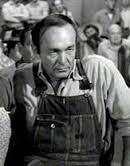Two Nonfiction Texts :
How Can the Poor Be Helped?
Is Poverty a Serious Threat?
Connections between the two texts:
TKAM Chapter 2- Walter doesn’t bring a lunch to school
Chapters 9 & 10 Is Poverty a Serious Threat?- The poor often lack an adequate amount of food.
The Cunninghams (a good example of poverty in Maycomb), don’t have food to send in their lunches, and they don’t have money to buy a lunch, or repay anyone that would buy them a lunch.
TKAM Chapter 3- Burris Ewell comes to school filthy because he has no way of getting clean at home
Chapters 9 & 10 Is Poverty a Serious Threat?- More than 600 million people in the United States live in neighborhoods or in homeless shelters that are harmful to their health due to lack of sanitation
Because of the Ewell’s conditions, they cannot get clean.
TKAM Chapter 17- the Ewell’s have a poor quality home, description in the chapter
Chapters 9 & 10 Is Poverty a Serious Threat?- More than 600 million people in the United States live in neighborhoods or in homeless shelters that are harmful to their health due to lack of sanitation
The Ewells live by a dump at the side of town. Their house is made of plank walls, corrugated iron, the roof is made of flattened tin cans, set on four uneven pieces of limestone.
TKAM Chapter 2- Burris Ewell needs to go to school more than one day a year to be set up for a productive life
Chapters 1-3 How Can the Poor Be Helped?- to help the poor be successful, we need to help the poor develop the skills they will need
If Burris Ewell is going to succeed in life and break the Ewell’s tradition of laziness and poverty, he will need to go to school so that he can set himself up to get a job and live a successful life. He needs initiative to start going, but with a father like Bob, it will be hard.
TKAM Chapter 2-3- when it says in the book that the government tried to get the Ewells to go to school more often, they should’ve pushed for them to go more, so that the children would get the skills they need to get their family out of poverty
Chapters 1-3 How Can the Poor Be Helped?- “The best way to end poverty is to make sure that no one is unable to work and many people possess the high-quality skills to become effective members of society”
Should the government should push for all kids to go to school and learn the skills they need?
General TKAM Knowledge :)- the Ewells only go to school one day per year
Chapters 11 & 12 Is Poverty a Serious Threat?- the Ewells need to go to school more than one day per year so that their family doesn’t have to be the way it is for more generations
If the Ewells want to get themselves out of poverty, they need to go to school to enable themselves to
General TKAM Knowledge :)- Bob Ewell drinks their welfare checks away
Chapters 5 & 6 Is Poverty a Serious Threat?- ½ of the poor have a history of alcohol abuse
Bob Ewell may abuse alcohol?
General TKAM Knowledge :)- Bob Ewell has a lot of issues (beating Mayella, trying to kill Jem and Scout, inability to hold a job)
Chapters 5 & 6 Is Poverty a Serious Threat?- those who aren’t well off are 2.5x more likely to have a mental disorder
Does Bob Ewell have a mental disorder?
TKAM Chapter 2- Walter Cunningham tells everyone that he has hookworms
Walter doesn’t wear shoes, which explains why he has them. Hookworms are spread by going barefoot it barnyards. This shows how poor the Cunninghams must be if they cannot afford shoes.
TKAM Chapter 2- Poor people repay by entailment
The Cunninghams have to pay people back with material things instead of money. For example, they paid the Finch’s in stovewood, hickory nuts, turnip greens, and holly at Christmas-time.
Because the Cunninghams had no money to pay the Finch’s, they had to pay the Finch’s with what they have.
Dr. Reynolds sometimes charged people a bushel of potatoes for the delivery of a baby.





